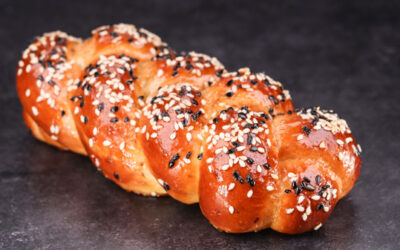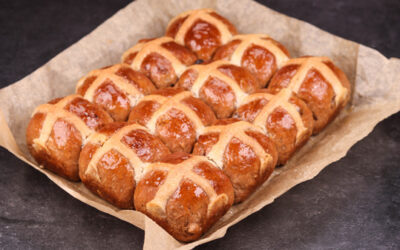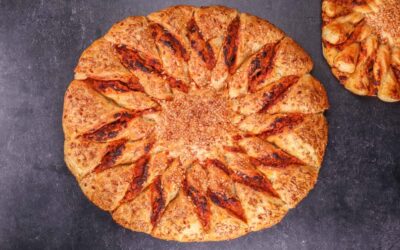Another great addition to the Breads of Easter playlist. This Armenian choreg will make the Easter Bunny come to your house for sure!
It may look like other festive breads because making a braided loaf for festivities is traditional in many cultures. But don’t let its simple looks deceive you.
What sets this choreg apart is its flavour. The main spice that distinguishes this bread from others is mahlab. It is made from ground cherry pits. The taste is hard to describe as it is so unique. It can taste kind of almondy and sweet. The only other time I used this spice was when I made a Greek Christmas bread called christopsomo.
Other ingredients which I added were nigella aka onion seeds which also have a very distinct flavour. Also, ground fennel seed to tie it all together. I feel that the fennel seed really brings the mahlab and nigella together and rounds off the flavour of this bread.
There are sweet and savoury versions of this bread. This one is kind of in between. Although it has a fair amount of sugar it is not overly sweet and the spices while being super aromatic and sweet smelling are also on the savoury side.
To make this a true sweet loaf you could skip the nigella seeds and perhaps increase the sugar by ¼.
Choreg can be shaped into various shapes. Swirls, snails, knots. It is usually made into many smaller rolls instead of being one large loaf. You can experiment and see what you like best. Make one batch and shape it into many different shapes.
This recipe will make 6 decently sized braids. To make more simply multiply the amount of ingredients.
Watch the video down below for detailed instructions.
Ingredients
For the dough –
400g (14.1oz) white bread flour
150g (5.3oz) eggs*
110g (3.9oz) milk*
60g (2.1oz) sugar
7g (0.25oz) instant dry yeast or 8.4g (0.3oz) active dry yeast or 21g (0.75oz) fresh yeast
7g (0.25oz) salt
6g (0.21oz) mahlab
5g (0.17oz) nigella seeds
3g (0.1oz) ground fennel seed
80g (2.8oz) soft butter
*To learn more about dough temperature control click here.
To finish –
1 egg for glazing
Sesame & nigella seeds to sprinkle on top
Method
- In a large bowl combine the milk, eggs, yeast, salt, sugar, mahlab, nigella seeds, and ground fennel. Mix well to dissolve the salt and sugar, and to hydrate the yeast. Add the flour and mix to a dough.
- Tip the dough out on the table and knead using the stretch & fold method for 7 minutes. It will be sticky but don’t get discouraged as it will start coming together as you keep kneading.
- Spread the dough out and place the butter onto it. Fold the dough around the butter and squish it all together. Force the butter into the dough. Keep pressing it in for about a minute.
- Continue with the stretch & fold kneading method for another 10 minutes. It takes some time because of all the eggs, butter, and sugar in this dough. But the little effort is well worth it. You can of course use a mixer if you have one. *Desired dough temperature 24C – 26C (75F – 79F). If your dough is warmer, then it will ferment more rapidly. If it is cooler, then it will take longer. Adjust proofing time accordingly.
- Place the dough in a bowl, cover it and leave to ferment for 1.5 hours.
- Fold.
- Ferment for 1.5 hours.
- Weigh the dough and divide it into 18 equal pieces. Pre-shape.
- Cover and refrigerate for 30 minutes. This step will not only act as the resting stage, but it will also make the dough easier to handle.
- Roll out three dough balls to about 20cm (~8in). Braid the loaf and place on a non-stick paper lined tray.
- Cover and ferment for 1.5 – 2 hours. *During the final hour of fermentation preheat your oven to 160C (320F) fan on.
- Brush the bread with egg and sprinkle with the seeds.
- Bake for 20 minutes until golden brown all over.
Leave to cool down and enjoy.
Keep in mind that the conditions in each kitchen are different, so fermentation times may vary for you. It is up to the baker to control the bread and react accordingly.
Your oven may be different too, so your baking time may vary.
Watch the video here



